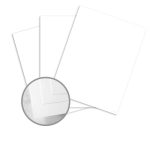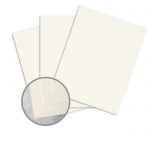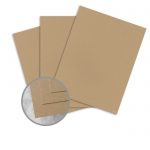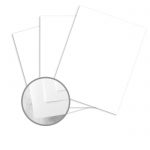There’s more to commercial printing than simply clicking Ctrl+P. Commercial printing encompasses a wide variety of unconventional print jobs, ranging in size, medium, and even printing method.
There are two types of printing methods common to commercial printers: offset printing and digital printing.
What is Offset Printing?
Offset printing, also known as offset lithography, is the most commonly used printing process.
In offset printing, the inked image you intend to print is transferred (or “offset”) onto your chosen medium. Before being printed onto your finished product, your image is first transferred onto printing plates and then onto a rubber blanket – then it’s transferred to your end medium. This is why it’s called “offset” printing – because your image isn’t transferred directly to your finished product.

What is Digital Printing?
Digital printing is comprised of the various methods of printing an image directly from a digital file onto a variety of media. Digital printing is usually used for professional, small-run jobs printed using a large-format or high-volume laser or inkjet printer.
What are the advantages of digital printing?
Digital printing is more expensive per page, but it offers a number of benefits that offset printing doesn’t:
- Printing on demand. Because there’s no need to create plates, digital printing allows commercial printers to print even a single sheet if needed.
- Shorter turnaround times. Without plates and other necessary prep, commercial printers can print nearly instantly using digital processes.
- Less time and labor. The cost per page might be higher when you print digitally, but cutting down on the time and labor required to create plates and move through the offset printing process may save you money in the long run.
- Easily modify images. If you need to make a last minute change to what you’re printing, digital printing makes it easy to make alterations without creating extra work.
- Technological advances. Offset printing may still be the most common printing process, but advances in digital printing technology may soon see it overtake offset methods as the primary printing process of choice.
What About Paper?
You wouldn’t use digital press ink during the offset printing process, so why would you use offset paper for a digital print job? You should always use digital paper in a digital press for a number of reasons. This is because digital paper is:
- Designed for the precise moisture levels of the digital press.
- Precision cut so you know exactly what size you should use.
- Treated with specific surface treatments designed for your printing medium, such as dry toner, liquid toner, or inkjet ink.
Don’t be tempted to use offset papers in your digital press. Cutting offset paper down to size and using it in your digital printer can result in a number of unfortunate consequences, including:
- Introducing contaminants into your digital press: Cutting offset paper down to the right digital size can introduce dust and debris into your digital printer.
- Adding time and labor: If you think you’re saving money using a cheaper sheet of paper, consider the amount of time it takes (and how much that time costs) to cut a sheet of paper down to the exact size you need.
- Sheets sticking together or being poorly cut: Stuck sheets can affect your printing quality (and waste precious resources), and poorly cut sheets just look unprofessional and low-quality.
- Printing on the wrong grain direction: Grain direction is very important when you want to fold, cut, or score paper. Printing on digital paper ensures you use the proper grain direction for your project.
If you feel compelled to use offset paper in your digital press, resist the urge. Digital paper will result in a much more professional, high-quality printed project, and you won’t gum up your printer in the process.
How To Choose Digital Paper
Digital presses all have different capabilities, so you need to ensure that you choose the paper that’s right for your press. Each press’s paper will be treated differently to accommodate the ink being used (ie. pigment-based or dye-based ink).
When you shop for digital paper, remember that there are two types of digital printers:
- Laser. Laser printers are compatible with most papers, included coated stocks.
- Inkjet. Inkjet printers have more specific paper requirements and are generally less friendly towards coated papers.
The Paper Mill Store carries digital press papers in many sizes and finishes designed specifically for a number of presses. Find paper specifically designed for your digital press below:
Let’s Get Digital
Offset printing is the most common printing method, but digital printing is on the rise thanks to advances in digital printing technology, faster turnaround times, and greater flexibility. Understanding the difference between offset and digital printing and the paper each method uses is the first step to choosing the right paper – and make sure you do choose the right paper. We’re here to help! Check out our full range of special digital press paper.






